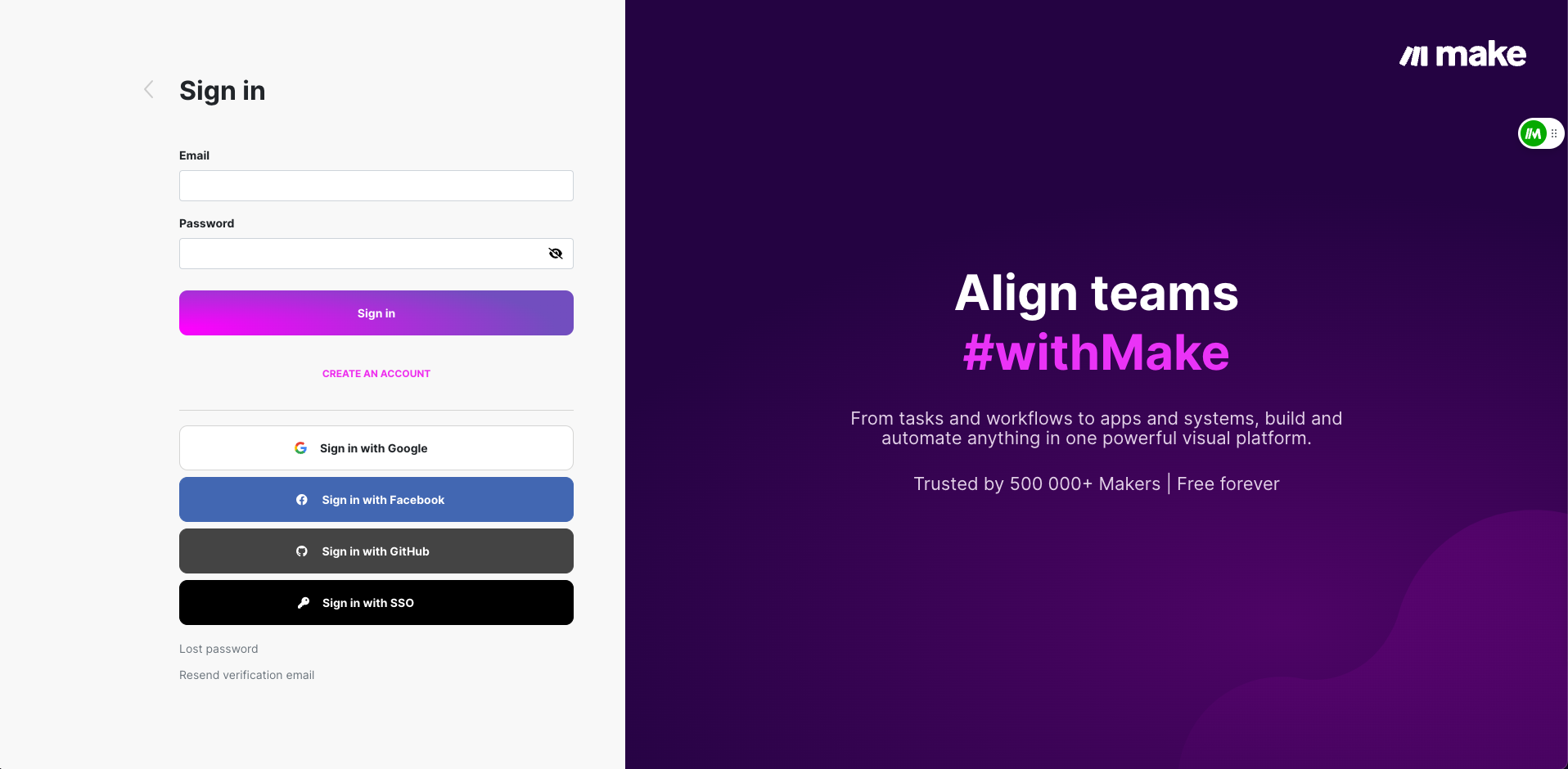Top 5 Hacks: Master No-Code Workflow Automation with Make.com
In the fast-moving business world, every second counts. Time wasted on repetitive tasks could be used for growing your business or improving your product. Traditionally, automating repetitive tasks was limited to developers and technical teams. Fortunately, the rise of no-code automation platforms like Make.com has changed that. Now, anyone can automate complex workflows without writing a single line of code.
No-code automation is not just about convenience. It helps businesses improve productivity, reduce errors, and ensure consistency in operations. Whether you manage a small business or a large team, automation allows you to streamline your tasks and focus on more strategic activities. In this article, we will explore five no-code automation hacks using Make.com to help you boost productivity and efficiency.

By the end of this article, you will learn how to eliminate tedious tasks, improve collaboration, and streamline your business operations—all without needing coding skills.
What is No-Code Workflow Automation?
No-code workflow automation allows users to automate repetitive tasks and processes using platforms that do not require programming knowledge. These platforms often feature drag-and-drop builders, pre-built templates, and app connectors that make it easy to streamline tasks.
The beauty of no-code platforms is their accessibility. With tools like Make.com, even non-technical users can build powerful workflows. Automation helps businesses save time, reduce errors, and scale operations efficiently. For example, you can automate everything from task assignments to customer support without writing code. In addition, it frees up your time to focus on innovation and growth.
Hack #1: Automating Task Management
Why Automating Task Management is a Game-Changer
Managing tasks manually can quickly become overwhelming, especially as your team or business grows. Manually assigning tasks, tracking progress, and managing deadlines are time-consuming and prone to errors. This is where automation can save you valuable time.
Make.com offers the perfect solution by allowing you to automate your task management process. Here’s how you can do it in a few easy steps:
- Select a Platform: Choose Make.com for task automation.
- Define Your Workflow: Identify the tasks you want to automate. For instance, automate task assignments, follow-ups, or updates when milestones are reached.
- Set Triggers: Use app connectors to define triggers. For example, receiving a new email or marking a task as complete can automatically trigger a workflow.
- Assign Actions: Specify the actions that occur when triggers are activated. For instance, assigning a new task to a team member based on project updates.
- Test & Optimize: Always test your workflow to ensure it runs smoothly and efficiently. Make adjustments as needed to improve the process.
Automating task management ensures tasks are assigned on time and nothing is forgotten. Your team stays focused on the most critical aspects of the project, increasing overall productivity and reducing human error.
Real-Life Example: Automating Task Assignments
For instance, consider a marketing team receiving new campaign requests daily. Instead of manually assigning these requests, you can set up a workflow that automatically assigns the request to the right team member based on the type of task. This system can also send reminders and updates to keep everyone on track.
Hack #2: Enhancing Communication and Collaboration
Why Communication Automation is Essential
Effective communication is the foundation of any successful business, especially in teams that are spread across different time zones or working remotely. However, keeping everyone on the same page can be challenging. Missed messages, delayed replies, and forgotten updates can lead to costly mistakes.
With communication automation, you can streamline your team’s interactions and ensure that everyone receives the right information at the right time. Here’s how you can set it up with Make.com:
- Integrate Communication Tools: Use Make.com to connect communication platforms like Slack, Microsoft Teams, or even email services.
- Automate Status Updates: Set up workflows to automate project status updates, so everyone is aware of progress without the need for manual check-ins.
- Set Triggers for Key Events: For example, when a task is marked as completed, a trigger can send an automated message to the entire team or specific members, keeping everyone in the loop.
- Customize Notifications: Tailor notifications for specific channels or individuals based on their role in the project. This reduces unnecessary noise and ensures people only receive relevant information.
- Monitor & Optimize: Continuously review your workflows to ensure that communication remains efficient and make adjustments where necessary.
Real-Life Example: Automating Team Notifications
Let’s say your team uses Slack for communication and Trello for task management. With Make.com, you can create an automation that sends a Slack message to your team whenever a new task is added to Trello. This message can include all the necessary details, such as the task description, deadline, and assigned team member. Additionally, you can set up automated follow-up messages in Slack to remind team members of upcoming deadlines or important milestones.
Hack #3: Simplifying Data Entry and Reporting
Automating Data Entry to Save Time and Reduce Errors
One of the most tedious and error-prone tasks in any business is manual data entry. Not only is it time-consuming, but human errors can result in costly mistakes. Fortunately, automating data entry is one of the easiest ways to save time and improve accuracy.
Here’s how you can simplify data entry and reporting with Make.com:
- Select Your Tools: Identify the platforms you want to integrate, such as Google Sheets, CRM systems, or databases like Airtable.
- Define Data Sources: Specify where the data will be pulled from, such as form submissions, email inquiries, or an online store.
- Automate Data Entry: Create workflows that automatically transfer data to your chosen systems. For example, whenever a customer fills out a form on your website, the data is automatically entered into your CRM and Google Sheets.
- Generate Reports Automatically: Set triggers that automatically generate reports at regular intervals, such as weekly sales reports, and send them to relevant team members.
Real-Life Example: Automating Sales Data Entry
Imagine you’re a sales manager receiving dozens of leads daily from your website. Manually entering this data into your CRM is time-consuming and prone to errors. By using Make.com, you can automate this process. Every time a lead submits a form, their details are automatically entered into your CRM, and a follow-up task is assigned to your sales team. Additionally, a report summarizing the new leads can be sent to you at the end of each week.
Hack #4: Streamlining Customer Support
How Automation Can Improve Customer Satisfaction
Customer support is the backbone of any business, but managing inquiries, tickets, and responses can become overwhelming, especially as your customer base grows. Automation can help streamline this process, ensuring quicker response times and improved customer satisfaction.
Here’s how you can automate your customer support with Make.com:
- Integrate Helpdesk Software: Connect platforms like Zendesk, Freshdesk, or HubSpot for efficient ticket management.
- Automate Ticket Routing: Automatically assign tickets to the appropriate team members based on the type of inquiry or urgency.
- Use Response Templates: Set up automated email responses for common customer inquiries to provide immediate assistance.
- Track Ticket Status: Ensure customers are kept in the loop with automated status updates as their issues progress.
- Analyze Support Metrics: Use automated reporting to track customer support performance, such as response times and resolution rates.
Real-Life Example: Automating Customer Inquiries
For example, if you run an e-commerce store, you likely receive multiple customer inquiries every day regarding order statuses. By using Make.com, you can set up an automation that pulls order data from your online store and sends automatic updates to customers when their order status changes. This could include confirmations when an order is placed, shipped, or delivered.
Hack #5: Optimizing Marketing Campaigns
Supercharging Your Marketing with Automation
Marketing is essential for business growth, but managing multiple campaigns across various platforms can quickly become overwhelming. From email marketing to social media posting and performance tracking, there’s a lot to manage. Fortunately, marketing automation can take much of the burden off your shoulders, allowing you to focus on strategy while the system handles the execution.
Here’s how you can optimize your marketing campaigns with Make.com:
- Integrate Marketing Platforms: Connect tools like Mailchimp, HubSpot, or Google Ads for seamless campaign management.
- Automate Social Media Posting: Schedule and automate posts across platforms like Facebook, Instagram, and Twitter without needing to log in manually each time.
- Set Up Email Campaigns: Create automated workflows that send follow-up emails based on customer behavior, such as abandoned cart reminders or post-purchase emails.
- Track Performance: Use automated reports to track the performance of your campaigns, such as open rates, click-through rates, and conversion rates.
- Optimize Campaigns: Continuously monitor the results and tweak your campaigns based on the data to improve ROI.
Real-Life Example: Automating Email Follow-Ups
Imagine you’re running an email marketing campaign for a product launch. By using Make.com, you can create an automated workflow that sends a series of emails to subscribers who have shown interest in your product. If they open the first email but don’t click through, a follow-up email is sent. If they make a purchase, they’re automatically moved to a different email list for post-purchase follow-ups.
FAQ Section
What is no-code workflow automation?
No-code workflow automation allows businesses to automate tasks and processes without needing to write code. Platforms like Make.com provide intuitive, drag-and-drop tools to create efficient workflows that streamline daily operations.
What is the difference between workflow integration and workflow automation?
Workflow integration focuses on connecting applications to work together seamlessly, while workflow automation goes a step further by streamlining business processes across apps, teams, and data. Automation involves setting predefined rules and triggers that automatically route tasks and information between people and systems.
What are workflow automation platforms?
Workflow automation platforms like Make.com use task management software to route tasks and information between people and systems based on predefined rules and triggers. For example, when one system marks a task complete, the automation can automatically send it to the subsequent assignee and update dashboards, thereby enhancing productivity and reducing manual intervention.
How does Make.com help in automating business workflows?
Make.com offers an intuitive visual builder that allows users to automate workflows without needing to write any code. With its extensive library of app connectors, Make.com makes it easy to integrate different systems and create automations that streamline business processes.
Can automation help reduce human errors?
Absolutely! By automating repetitive tasks like data entry, task assignments, and report generation, businesses can significantly reduce the chances of human error. Automation ensures consistency and accuracy in executing tasks, which leads to improved efficiency.
How can workflow automation save time for businesses?
Workflow automation saves time by eliminating the need for manual intervention in repetitive tasks. This allows employees to focus on more strategic, high-value work rather than spending time on mundane tasks like data entry or task assignments. Automation ensures that workflows run smoothly, which can lead to faster completion of projects and processes.

